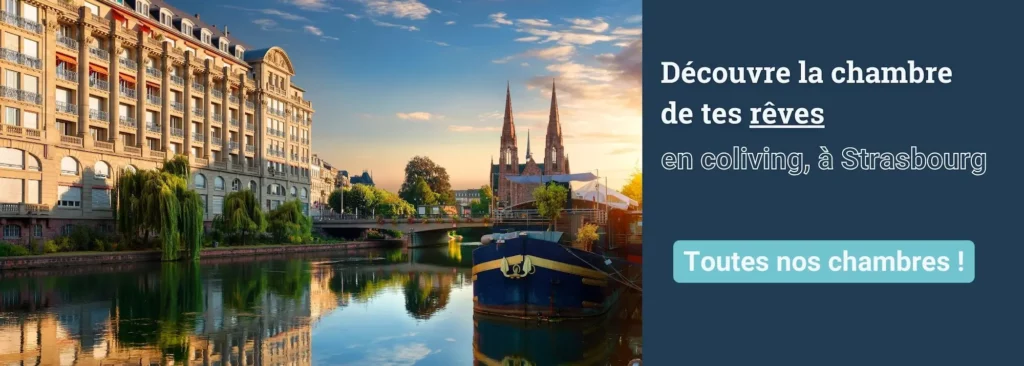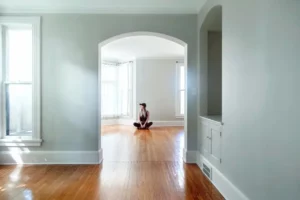Strasbourg, the capital of Alsace and Europe, is a must-visit city when you’re in France. With its rich cultural and architectural heritage, we’re sure you’ll fall head over heels in love with it. Far from being outdated, Strasbourg is a land of innovation and, most importantly, it is here that the very essence of European institutions is forged. But if you come to Strasbourg, it’s primarily to explore the city, right? Beneath its colorful half-timbered architecture, the city is full of little corners and alleys brimming with history that you absolutely must discover. In this article, we’ll give you all the activities to do, from the most iconic to the most unusual:
- The Gothic Notre-Dame Cathedral of Strasbourg, a symbol of the city
- The picturesque district of Petite France and the Tanners‘ House
- Cruises on the Ill River
- The European Parliament and other European institutions
- Gutenberg Square and its Christmas market
- Alsatian gastronomy: sauerkraut, tarte flambée, beer, and wine
Join us now for an Alsatian journey as we visit Colmar, the castles, the unique Alsace Wine Route, and even Germany 🥨
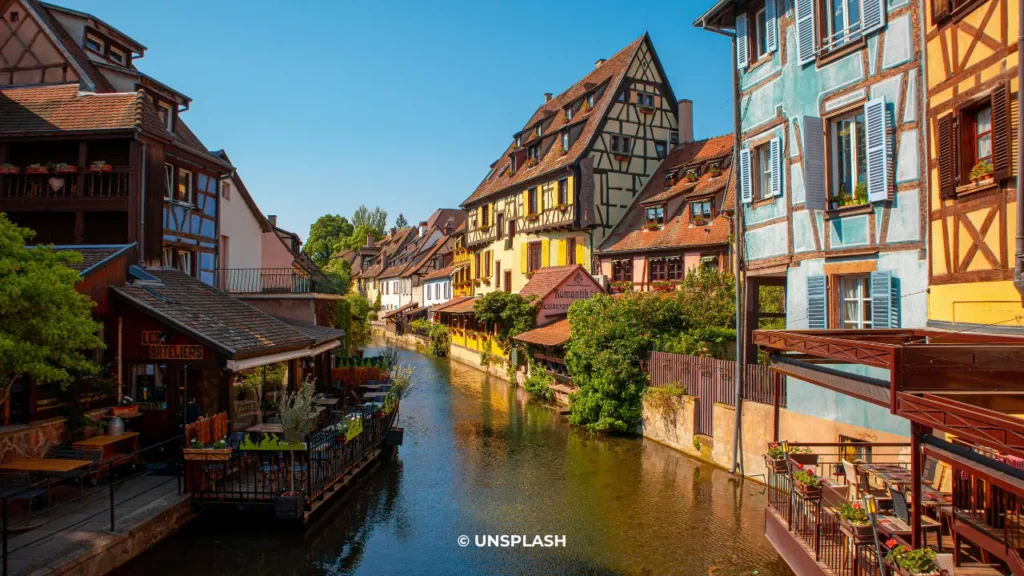
The must-sees of Strasbourg
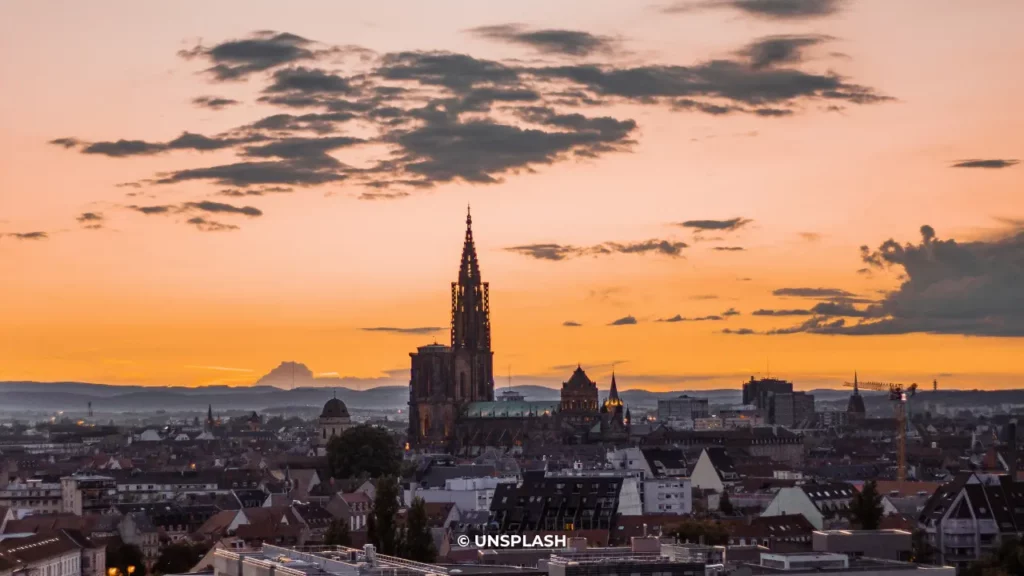 If you’re coming to Strasbourg, get ready to walk and be active because the city is full of must-do activities! Ready for the guided tour?
If you’re coming to Strasbourg, get ready to walk and be active because the city is full of must-do activities! Ready for the guided tour?
The Notre-Dame Cathedral of Strasbourg
Whether you’re in the center or on the other side of the city, its single spire is unmistakable and can be seen for miles around. A historic Alsatian building and emblem of Strasbourg, its construction took over 420 years! Impressive, isn’t it?
Blending Gothic and Romanesque architecture, it truly reflects the changes that have occurred over time. Its pink color? It comes from the Vosges sandstone, a natural stone from the neighboring region. A UNESCO World Heritage site, it was once the tallest building in the world. Yes, Strasbourg Cathedral has since been surpassed by Rouen Cathedral, the Empire State Building in New York, and the Burj Khalifa in Dubai. Like to get a bird’s eye view? Climb to the top of the tower to admire the view of Strasbourg, its alleys, and surroundings. Breathtaking! Its interior also contains some beautiful finds, including an astronomical clock made in the XVI century. Standing 18 meters tall, it consists of 3 clocks, all built in different centuries.
Petite France
Right next to the Grande Île district is another historic district, Petite France. A UNESCO World Heritage site, Petite France is truly a must-visit. With its colorful facades or half-timbering overlooking the Ill, its flowered window sills, and its cobbled streets, it’s a timeless part of Strasbourg. Like stepping back in time. Benjamin Zix Square offers one of the most beautiful views to admire the district and especially, to take the best photos! This was the former district of millers, fishmongers, and tanners. The latter even used the steep roofs to dry animal hides. Petite France is also famous for being crossed by the canals of 3 mills and its various bridges. A gem to see!
The European Quarter
You might not know it, but there is indeed a European Quarter. Well, not really, but it’s kind of its nickname. Why? Because it’s in the Orangerie, Robertsau, and Wacken districts that some of the most significant European political institutions are located. Here, laws are voted on in the European Parliament. This district also houses the Council of Europe, and the Place de l’Europe, a villa offering various animations and information throughout the year. It is also here that the headquarters of the Franco-German channel Arte is located. You know, the one that broadcasts all kinds of super interesting documentaries (no joke, we’re fans here). It’s no wonder Strasbourg is nicknamed the “Home of Europe.”
The Rohan Palace
Built in the first half of the XVIII century, this episcopal palace is reminiscent of the grandest Parisian hotels. A historic monument, it has seen all the greats of the country, including the Rohan family to whom it belonged. It also served as a lecture hall for the Imperial Military Medical School of Strasbourg, between 1794 and 1870. It is located in the city center and is therefore very easily accessible from other tourist points of the city. Today, it houses 3 museums: the Museum of Decorative Arts, the Museum of Archaeology, and the Museum of Fine Arts. It has nevertheless retained all its former prestige. You can visit the 6 large apartments it contains, including the king’s bedroom, and the 3 small apartments where Napoleon’s bedroom is located.
Alsatian gastronomy
At Colivys, it’s impossible for us to visit a city without tasting its cuisine. Strasbourg is full of small restaurants and winstubs offering all the Alsatian specialties. Among them is the Maison Kammerzell. This typically Alsatian four-story institution located next to the cathedral is one of the city‘s best and oldest breweries. Its facade and interior showcase the splendor of Strasbourg. Here, you can savor local dishes such as cervelas (sausage), crayfish, and various sauerkrauts. Another must-visit spot is the Maison des Tanneurs. Formerly a building used as a tannery, this house has become a gastronomic institution in Strasbourg. Located in the Petite France district, the Maison de la Choucroute (Sauerkraut House) offers you to taste a classic or fish sauerkraut, foie gras, pike-perch fillet, or even iced kougelhopf. Much of Strasbourg‘s best is found in this place steeped in history. Another restaurant to dine at is the Vieux Strasbourg. It’s a quaint restaurant not far from the cathedral. With its authentic facade and interior, you’ll experience the essence of old taverns, right down to the narrow dining room. The menu is short, and the cuisine is typical and somewhat different from what you’ll find elsewhere. Remember to book if you want to go. Whether you’re alone or in a group, there’s no guarantee of infinite space. Finally, head to the Baeckeoffe d’Alsace, a restaurant located just opposite Petite France. With its kitschy ambiance reminiscent of an Alsatian chalet, you can taste all the Alsatian traditions: tarte flambée, baeckeoffe, spaetzle (typical small pasta), Munster cheese, or apfelstrudel.
Your palate is sure to be delighted by the culinary heritage defended by these places. Of course, always accompanied by a glass of regional wine (in moderation).
Hidden gems and unique experiences
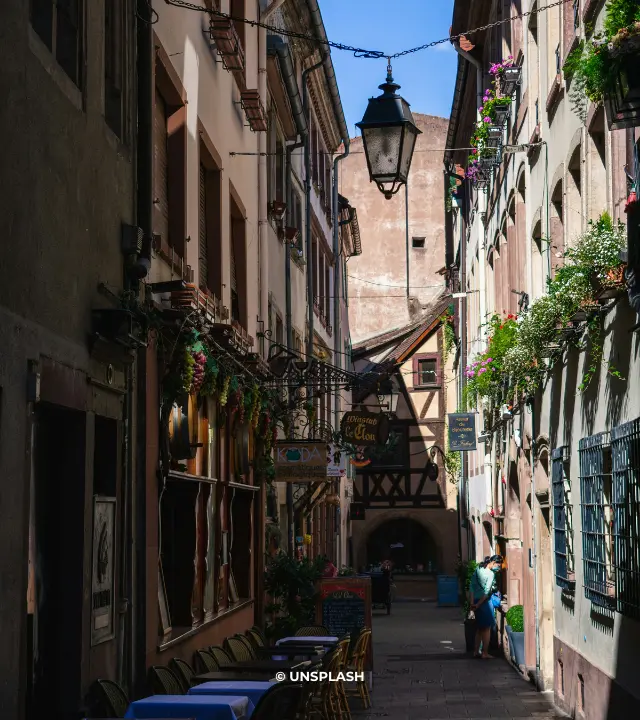
Indeed, the city‘s historic center is full of monuments and attractions to see, but Strasbourg is more than just the cathedral and sauerkraut. Strasbourg has a unique influence due to its Germanic past. You might not know this, but Alsace and Lorraine were German for several years until the Treaty of Versailles confirmed their full reintegration into France in 1919. However, its past is still very visible, especially in the Neustadt district.
With its wide roads and imposing buildings featuring Germanic architecture, Neustadt is one of Strasbourg‘s most impressive districts. Built in the 1880s, it showcases the power of this empire. Currently the political and administrative center of Strasbourg, here you’ll find the national theater, the library, and the city‘s university. Impressive and prestigious buildings. It’s in the latter that you’ll find an urban botanical garden built on a site of more than 3.5 hectares. This environment is home to nearly 5,000 plant species.
Bridging old and new Strasbourg, the Neustadt district also hosts the Palais du Rhin. A former imperial palace, this historic monument, reminiscent of Berlin’s buildings, is located in the heart of a landscaped garden. Perfect for reading or resting outdoors when the weather gets nice.
This district also houses the Orangerie Park. With its 26 hectares, it’s one of the locals’ favorite places to visit regardless of the weather. Also a historic monument, it features beautiful French gardens, large lawns, playgrounds, and numerous statues representing great names and figures from Strasbourg. If you want to rediscover your inner child, this is the place. A haven of peace in the heart of the city, it also includes a waterfall and several artificial lakes that will add a bit more life to your Sunday runs. The Orangerie Park is not just about water and lawns. It also houses the Pavillon Joséphine, a former resting place for the empress, and the Buerehiesel building, an Alsatian farm now converted into a gourmet restaurant. It also contains a zoo that has been around since 1895. Managed by an association, it hosts nearly 500 animals from 48 different species.
Why venture to another district when Neustadt has so much to offer? In a different style, head to the Tomi Ungerer Museum. Located in the Villa Greiner, a XIX-century mansion, the museum is also known as the International Illustration Center. Its 700 m² house a collection of more than 14,000 drawings made by the namesake artist, one of the greatest illustrators of the past fifty years. From advertising illustrations and children‘s drawings to a more satirical universe: his eclectic works from the XX century are displayed on 3 levels.
Back in the city center, in the Grande Île district, our next must-see attraction is just steps away from the cathedral square. When the weather is nice, it’s always pleasant to take a stroll on the Ill. You can admire the Vauban dam, built upstream of the covered bridges and their peninsula, to defend Strasbourg in anticipation of potential future wars and protect what the city has. A historic monument, this dam, also known as “Grand Lock,” connects the Quartier Blanc square and the Jean-Arp square where the Museum of Modern and Contemporary Art is located. If you pass by at night, it will be illuminated, making it even more beautiful.
If you have the time and desire, we highly recommend venturing beyond Strasbourg. You’ll see, there are gems worth visiting during your stay. So why not rent a car and head towards the hidden wonders of the region?
The Wine Route
Forget Bordeaux. Alsace has its wines too! Starting west of Strasbourg, in the town of Marlenheim, the wine route features vineyards as far as the eye can see. A landscape like you’ve never seen before that extends to the town of Thann, near Mulhouse. A must-visit when you come to Alsace, the wine route will introduce you to beautiful villages like Obernai, Ribeauvillé, and Riquewihr, home to perfect wine cellars for starting a tasting. If you don’t drink, no problem, because the architecture and heritage of these villages will charm you. Not to mention the local specialties. You can even walk the trails among the vineyards to reach the villages. This getaway will make for a delightful time.
The Haut-Koenigsbourg Castle
The wine route then takes you to the town of Orschwiller to visit a unique castle: the Haut-Koenigsbourg Castle. This XII-century fortress, the most famous in Alsace, offers the most beautiful panoramic views of the natural landscapes, vineyards, and plains of Alsace. But its interior is just as impressive. Behind its walls, it contains medieval promenades with coats of arms that will transport you through the most beautiful period films! Experience the life of lords for a few hours.
Colmar
Continuing along the wine route, take a car or train south from Strasbourg for a stop in Colmar. Located in the heart of the vineyards, this city is a must-visit. A true paradise on Earth, with its colorful houses, half-timbering, and flowered facades, it almost feels like Disneyland. With its pedestrian zone and cobblestone streets, Little Venice is perfect for enjoying and strolling during the beautiful days of spring and fall, when the weather is mild. If you want to tour Colmar without getting tired, you can take the little train that serves all the sights and corners of Colmar worth admiring. Highly touristic, did you know that the city also served as a backdrop for various Asian series? Indeed! Its canals and flowered quays have charmed even thousands of kilometers away.
Europapark
The last destination not to be missed, a bit more thrilling this time. Head to Germany, just a few kilometers from the border, to visit Europapark. For one or more days, we’re sure you’ll have a blast among the 59 attractions available. Europapark also guarantees a change of scenery! Here, there are 20 thematic areas, each representing a different country. For France, you’ll find Alsace but also Paris and its splendor. More than just an amusement park, a true architectural masterpiece has been created here. Down to the smallest details and dishes, because yes, even the restaurants are themed and offer a menu related to the location they represent. No matter your age, this original outing idea is sure to please!
Cultural activities and events
Strasbourg is rich in all aspects, especially in culture. Museum exhibitions, guided tours of the cathedral, unusual visits, etc.: there will always be something to do.
Between February and March, you must not miss the Strasbourg carnival! A true institution for years now, this celebration marks the renewal with parades of floats, majorettes, bands, and other creatures straight out of the Rhenish imagination. Alsace, having been part of Germany (or the German Empire) for a long time, has retained strong influences that persist today. Families, children, students, etc.: everyone meets in the city center of Strasbourg, specifically on Place de l’Etoile, to participate in this event and see the most beautiful costumes.
If you like sports, particularly tennis, book your spot for the Strasbourg International, taking place at the end of May. The premier women’s tennis tournament in France, it occurs just before the French Open in front of the European Parliament. An exceptional venue for an exceptional event where you can watch the best players compete: Ons Jabeur, Iga Swiatek, Coco Gauff, or Caroline Garcia. For 2024, the tournament becomes the third-largest tennis tournament in France. Impressive, right?
We were talking about the European Parliament, know that it will be in the spotlight throughout May. As the European capital, Strasbourg is the ideal place to pay tribute to Europe. Numerous activities will be organized to discover everything that has shaped the continent we know today, its creation, and its challenges. A month rich in festivities that will take place in various locations around the city, but as you may have guessed, the so-called “European” district will be favored during this month.
After sports and politics, Strasbourg also hosts musical events. This summer, like every summer for years, music festivals are organized, and this summer is no exception. In June, the Fête de la Musique is in full swing in Strasbourg. Organized for decades and created by the Ministry of Culture, you can be sure that every corner of the city will be lively. If you’re a fan of alternative music, the Contre-Temps Festival is for you! The most picturesque locations in the city will be requisitioned for the occasion, allowing you to be carried away by the rhythms for nearly 10 days. In July, you can attend jazz concerts at Place Saint-Thomas, in the Petite France district. A romantic atmosphere to enjoy over a weekend.
In October, if your athletic spirit is back in the spotlight, take part in La Strasbourgeoise. October is Breast Cancer Prevention Month, and Strasbourg is fully involved. La Strasbourgeoise is not just a race for women. It also
includes traditional and Nordic walking courses, as well as canoeing. It’s also a time to highlight the most important information, especially awareness and screening for breast cancer.
Finally, Strasbourg ends the year with one of the most anticipated events: the Christmas market. If there’s one place in the world where Christmas is celebrated in style, it’s Alsace. From November 24 to December 24, 300 chalets will take over the city: quays, squares, and even bridges will be part of the festivities. But the main part of Strasbourg‘s Christmas market takes place in Place Kléber, with its remarkable and gigantic Christmas tree, and Place Gutenberg, known for its essential carousel. These places transform to host the largest Christmas market in Alsace. It’s an opportunity for you to enjoy this month by taking beautiful walks in Strasbourg amidst the lights. It’s a chance to awaken the child within and discover all the riches of the region‘s gastronomic and artisanal heritage.
Ous Practicals tips for visitors
Alsace is a region that can be visited all year round. Needless to say, the same goes for Strasbourg, a city that shows its different facets with the changing seasons. However, if there is a preferred time to visit the city, it would be in spring. The weather is mild, and the trees begin to blossom. It’s not too hot, which is perfect for enjoying lunch on a terrace, taking strolls, and discovering all the treasures Strasbourg has to offer. It’s also the time when some museums and monuments that may have closed for the winter reopen.
Strasbourg is a large city that can be easily explored on foot, by tram, and especially by bike. Yes, Strasbourg is, in addition to being recognized as the capital of Europe, the French capital (at least) of cycling! With over 560 km of bike paths, you can traverse the city from north to south, and from east to west. There are also 2 “Eurovelo” routes that allow you to enjoy rides along the Rhine. You’ll easily find a bike-sharing station in the city, with many stations scattered throughout.
Once transportation is sorted, the next question is accommodation. Strasbourg offers numerous hotels and short-term rental options. This is convenient if you’re staying just a few days to explore the city with your family, but if you’re planning a stay of several months for studies, work, or just to settle down and travel, another option might be more suitable: coliving. This new way of living draws inspiration from flat-sharing and offers shared housing with services. A more affordable solution than a seasonal rental, you could even make friends within the coliving community, who will likely share your interests. To find the coliving that suits you, online platforms like Colivys specialize in this type of accommodation to make your life easier. We’re sure you’ll find the right one for you!
Strasbourg through the seasons
Strasbourg is a city that can be visited in any season. Spring, summer, autumn, winter: each offers a new aspect to discover. In spring, the Alsatian capital regains its colors after the winter. When the weather gets warmer, you can enjoy picnic areas and parks to relax with family or friends. In summer, it gets hotter. It’s the perfect time to visit a church, go on a cruise, and explore the Grande Île of Strasbourg, which we mentioned earlier, attend one of the many concerts in the city, or stroll around the lively streets of Strasbourg with a pretzel and a bottle of water in hand. Come autumn, the weather turns milder but remains pleasant. It’s our favorite time to sit in a tea room overlooking the Vauban dam and the Ill, savoring a cup of hot chocolate and a slice of Black Forest cake. Autumn is also a great time to visit the zoo and the surroundings of the city and partake in Halloween festivities. Finally, with the arrival of winter, it’s time for the magic of Christmas and Saint Nicholas. The city is adorned with lights, and the warm atmosphere you find is dedicated to this time of year. With a mulled wine in hand, you can organize a treasure hunt to rediscover the city under the snowflakes. With projections on the cathedral‘s stained glass windows and the Christmas market: Strasbourg becomes a new city.
Also discover our articles on Strasbourg:
- If you are looking for the best area to live in Strasbourg
- If you are interested in the price per m2 of rental in Strasbourg
- If you are looking for the best places to cowork in Strasbourg
- If you are looking for a room to rent in Strasbourg
- If you are looking for a coliving room in Strasbourg

